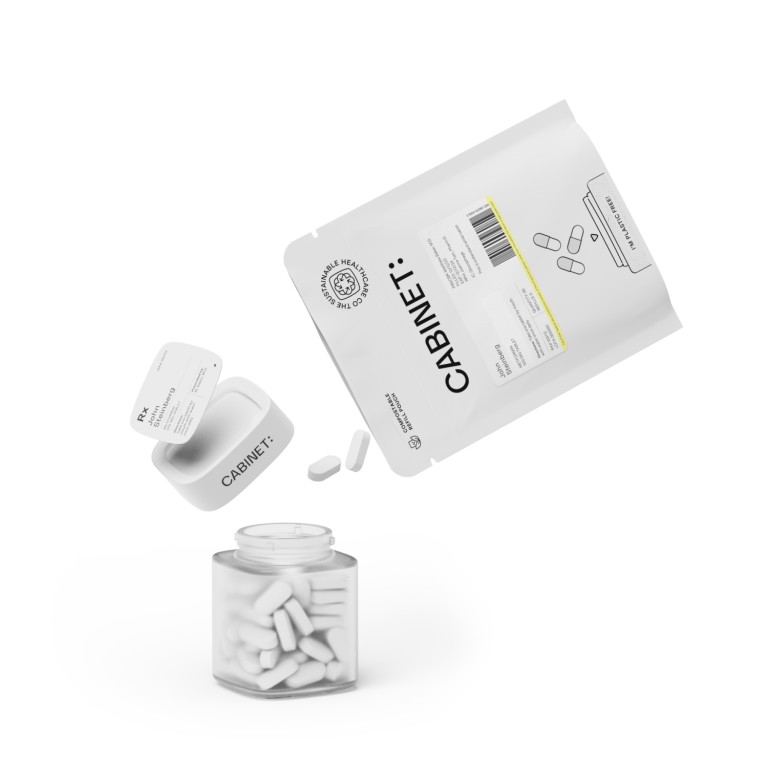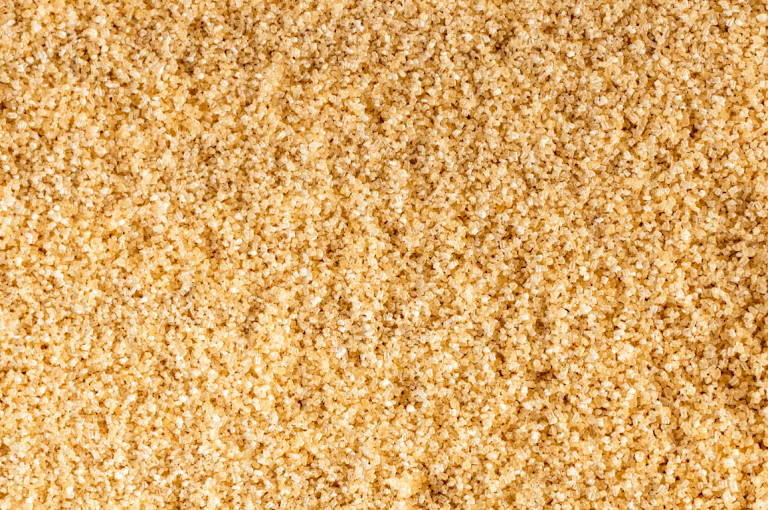If you've ever experienced heartburn, indigestion, or stomach ulcers, you may have come across a medication called Famotidine. But how long does it take for Famotidine to work its wonders? In this article, we explore the ins and outs of Famotidine, its mechanism, time frame for effectiveness, dosage and administration, as well as its potential side effects and precautions. So, grab a cup of tea and let's dive in!
Understanding Famotidine
Lectures, deadlines, and spicy meals – our lives can be filled with situations that trigger an unpleasant burning sensation in the chest. Famotidine offers relief by targeting the overproduction of stomach acid, the root cause of many gastrointestinal discomforts.
Let's dive deeper into the world of Famotidine and explore its mechanisms of action, uses, and benefits.
What is Famotidine?
Famotidine belongs to a class of medications called H2 receptor antagonists. Its main purpose is to reduce the production of stomach acid by blocking the histamine H2 receptors in the stomach. By doing so, it provides relief from acid-related conditions like heartburn, gastroesophageal reflux disease (GERD), and stomach ulcers.
When you consume food, your stomach produces acid to aid in digestion. However, in some cases, the stomach may produce an excessive amount of acid, leading to discomfort and various digestive issues. Famotidine steps in to regulate this acid production, restoring balance and alleviating the symptoms associated with acid-related conditions.
Uses of Famotidine
While Famotidine is commonly associated with treating heartburn, its benefits extend beyond that. Physicians may also prescribe Famotidine for the prevention and treatment of gastric and duodenal ulcers, as well as to manage conditions such as Zollinger-Ellison syndrome, a rare disorder that causes excessive stomach acid production.
Gastric and duodenal ulcers are painful sores that develop in the lining of the stomach and the upper part of the small intestine, respectively. These ulcers can be caused by factors such as infection, prolonged use of nonsteroidal anti-inflammatory drugs (NSAIDs), or excessive acid production. Famotidine helps in healing these ulcers by reducing acid secretion and allowing the damaged tissues to repair.
Zollinger-Ellison syndrome, on the other hand, is a rare condition characterized by the presence of tumors in the pancreas or duodenum. These tumors produce excessive amounts of a hormone called gastrin, which stimulates the stomach to produce more acid. Famotidine plays a crucial role in managing this condition by blocking the histamine H2 receptors and reducing acid production.
It's important to note that Famotidine is a prescription medication, and its use should be under the guidance of a healthcare professional. They will assess your specific condition and determine the appropriate dosage and duration of treatment.
In conclusion, Famotidine is a valuable medication that targets the overproduction of stomach acid, providing relief from various acid-related conditions. Whether you're experiencing heartburn, gastric ulcers, duodenal ulcers, or managing Zollinger-Ellison syndrome, Famotidine can help restore balance to your digestive system and improve your overall well-being.
The Mechanism of Famotidine
It's important to understand how Famotidine works its magic in our bodies to appreciate its time frame for effectiveness and potential interactions with other substances.
Famotidine, a medication commonly used to treat acid-related discomfort, exerts its therapeutic effects by selectively blocking the histamine H2 receptors in the stomach. These receptors are responsible for triggering the production of acid in the stomach. By inhibiting these receptors, Famotidine reduces the amount of acid that is released into the stomach, providing relief from symptoms such as heartburn, indigestion, and acid reflux.
When Famotidine is ingested, it is rapidly absorbed into the bloodstream and reaches its target site, the histamine H2 receptors in the stomach lining. Once it binds to these receptors, Famotidine prevents histamine, a chemical messenger, from activating them. As a result, the production of gastric acid is significantly reduced, leading to a decrease in acidity within the stomach.
By reducing the acidity, Famotidine helps to alleviate the discomfort caused by excessive acid production. It provides relief from symptoms and promotes the healing of conditions such as peptic ulcers and gastroesophageal reflux disease (GERD).
Factors Affecting Famotidine's Effectiveness
While Famotidine is effective for many individuals, its effectiveness can vary depending on several factors. Understanding these factors can help individuals and healthcare providers optimize the use of Famotidine for maximum benefit.
One important factor is the severity of the condition being treated. In cases of mild to moderate acid-related discomfort, Famotidine may provide quick relief within a relatively short time frame. However, for more severe conditions, it may take longer for the medication to exert its full effect.
Another factor that can influence Famotidine's effectiveness is an individual's metabolism. The rate at which Famotidine is metabolized and eliminated from the body can vary between individuals. Factors such as age, liver function, and the presence of other medications can affect the metabolism of Famotidine. In some cases, certain individuals may require higher doses or more frequent dosing to achieve the desired therapeutic effect.
Furthermore, an individual's overall health can also impact the effectiveness of Famotidine. Certain medical conditions, such as kidney disease or gastrointestinal disorders, may affect the absorption, distribution, metabolism, and elimination of Famotidine, potentially altering its effectiveness. It is important for individuals with underlying health conditions to consult with their healthcare provider to determine the appropriate dosage and duration of Famotidine therapy.
In addition to these factors, it is worth noting that Famotidine may interact with other substances, including medications, supplements, and certain foods. These interactions can either enhance or diminish the effectiveness of Famotidine. Therefore, it is crucial to inform healthcare providers about all medications and substances being used concurrently to ensure the safe and optimal use of Famotidine.
Overall, Famotidine's mechanism of action involves selectively blocking histamine H2 receptors in the stomach, thereby reducing acid production and providing relief from acid-related discomfort. However, its effectiveness can be influenced by factors such as the severity of the condition, an individual's metabolism, and their overall health. By considering these factors and addressing potential interactions, healthcare providers can tailor the use of Famotidine to meet the specific needs of each individual.
Time Frame for Famotidine to Work
Now, let's get to the question that brought us here – how long does it take for Famotidine to start working? The time frame can vary depending on the specific condition being treated and the individual's response to the medication.
Immediate Effects of Famotidine
Typically, Famotidine starts to provide relief within 1 to 2 hours after ingestion. However, it's important to remember that individual experiences may vary. For some, relief may occur sooner, while for others, it may take a bit longer.
Long-term Effects of Famotidine
When used as part of a treatment plan, Famotidine aims to provide long-term relief from acid-related conditions. It is important to continue taking the prescribed dosage and follow your healthcare provider's instructions to achieve the best results. Should symptoms persist or worsen, it's crucial to consult your healthcare provider.
Dosage and Administration of Famotidine
Let's take a moment to discuss the recommended dosage and proper administration techniques for Famotidine.
Recommended Dosage for Different Conditions
The optimal dosage of Famotidine depends on the underlying condition being treated. For heartburn and acid indigestion, over-the-counter Famotidine is available in strengths of 10 mg and 20 mg. However, for more severe conditions such as stomach ulcers or GERD, a healthcare provider may prescribe higher strength tablets or even intravenous administration.
Proper Administration of Famotidine
Famotidine is typically taken orally, and it is advisable to follow the instructions provided by your healthcare provider or the packaging label. It can be taken with or without food, but it's essential to maintain consistency in your administration routine. If you have any concerns or questions about the proper administration, don't hesitate to reach out to your healthcare provider for clarification.
Side Effects and Precautions
As with any medication, Famotidine comes with potential side effects and precautions to consider. While most individuals tolerate Famotidine well, it's important to be aware of possible adverse effects.
Common Side Effects of Famotidine
Common side effects of Famotidine include headache, dizziness, constipation, and diarrhea. These side effects are usually mild and temporary in nature. However, if persistent or severe side effects occur, it is crucial to seek medical advice.
Precautions When Taking Famotidine
If you have any known allergies or medical conditions, it is important to disclose these to your healthcare provider before starting Famotidine. Additionally, it's advisable not to exceed the recommended dosage and to avoid taking Famotidine with certain medications or substances that may interact with it. Always consult with your healthcare provider or pharmacist for guidance.
In conclusion, Famotidine is a valuable medication for managing acid-related conditions such as heartburn, GERD, and stomach ulcers. While its time frame for effectiveness may vary, Famotidine typically provides relief within 1 to 2 hours after ingestion. It's crucial to follow the recommended dosage and administration guidelines, as well as be aware of potential side effects and precautions. Remember, if you have any concerns or questions about Famotidine or your specific condition, it's always best to consult with your healthcare provider for personalized advice.








